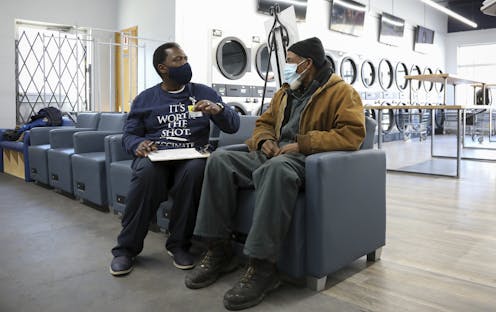Matching tweets to ZIP codes can spotlight hot spots of COVID-19 vaccine hesitancy
- Written by Mayank Kejriwal, Research Assistant Professor of Industrial & Systems Engineering, University of Southern California
 Public health officials need to know where to focus their vaccination outreach efforts.AP Photo/Teresa Crawford
Public health officials need to know where to focus their vaccination outreach efforts.AP Photo/Teresa CrawfordPublic health officials are focusing on the 30% of the eligible population that remains unvaccinated against COVID-19 as of the end of October 2021, and that requires figuring out where those people are and why they are unvaccinated.
People...
Read more: Matching tweets to ZIP codes can spotlight hot spots of COVID-19 vaccine hesitancy

















